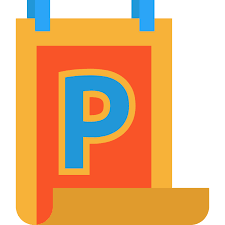Browse
Disciplinary Content
Posted on: #iteachmsu


Posted by
almost 5 years ago
Join with :
https://www.bigcommerce.com/ecommerce-answers/what-is-an-alt-tag-and-how-does-it-impact-seo/
https://www.bigcommerce.com/ecommerce-answers/what-is-an-alt-tag-and-how-does-it-impact-seo/
Disciplinary Content
Posted on: #iteachmsu



Posted by
about 5 years ago

Description is the pattern of narrative development that aims to make vivid a place, object, character, or group. Description is one of four rhetorical modes, along with exposition, argumentation, and narration. In practice it would be difficult to write literature that drew on just one of the four basic modesDescription is the pattern of narrative development that aims to make vivid a place, object, character, or group. Description is one of four rhetorical modes, along with exposition, argumentation, and narration. In practice it would be difficult to write literature that drew on just one of the four basic modesDescription is the pattern of narrative development that aims to make vivid a place, object, character, or group. Description is one of four rhetorical modes, along with exposition, argumentation, and narration. In practice it would be difficult to write literature that drew on just one of the four basic modesDescription is the pattern of narrative development that aims to make vivid a place, object, character, or group. Description is one of four rhetorical modes, along with exposition, argumentation, and narration. In practice it would be difficult to write literature that drew on just one of the four basic modesDescription is the pattern of narrative development that aims to make vivid a place, object, character, or group. Description is one of four rhetorical modes, along with exposition, argumentation, and narration. In practice it would be difficult to write literature that drew on just one of the four basic modes.
Disciplinary Content
Posted on: #iteachmsu


Posted by
about 5 years ago
The description is the pattern of narrative development that aims to make vivid a place, object, character, or group. The description is one of four rhetorical modes, along with exposition, argumentation, and narration. In practice it would be difficult to write literature that drew on just one of the four basic modes.
Disciplinary Content
Posted on: #iteachmsu



Posted by
about 5 years ago
The book description is the pitch to the reader about why they should buy your book. It is sales copy to get them to see that the book is for them (or not), and then make the purchase. ... In many cases, the In many cases, the description is the factor that solidifies in the reader's mind whether the book is for them or not.description is the factor that solidifies in the reader's mind whether the book is for them or not.
Disciplinary Content
Posted on: #iteachmsu



Posted by
about 5 years ago

Description is the pattern of narrative development that aims to make vivid a place, object, character, or group
Disciplinary Content
Posted on: #iteachmsu



Posted by
about 5 years ago

Description is the pattern of narrative development that aims to make vivid a place, object, character, or group. Description is one of four rhetorical modes, along with exposition, argumentation, and narration. In practice it would be difficult to write literature that drew on just one of the four basic modes
Disciplinary Content
Posted on: #iteachmsu



Posted by
over 5 years ago

Before you can begin to determine what the composition of a particular paragraph will be, you must first decide on an argument and a working thesis statement for your paper. What is the most important idea that you are trying to convey to your reader? The information in each paragraph must be related to that idea. In other words, your paragraphs should remind your reader that there is a recurrent relationship between your thesis and the information in each paragraph. A working thesis functions like a seed from which your paper, and your ideas, will grow. The whole process is an organic one—a natural progression from a seed to a full-blown paper where there are direct, familial relationships between all of the ideas in the paper.
The decision about what to put into your paragraphs begins with the germination of a seed of ideas; this “germination process” is better known as brainstorming. There are many techniques for brainstorming; whichever one you choose, this stage of paragraph development cannot be skipped. Building paragraphs can be like building a skyscraper: there must be a well-planned foundation that supports what you are building. Any cracks, inconsistencies, or other corruptions of the foundation can cause your whole paper to crumble.
So, let’s suppose that you have done some brainstorming to develop your thesis. What else should you keep in mind as you begin to
The decision about what to put into your paragraphs begins with the germination of a seed of ideas; this “germination process” is better known as brainstorming. There are many techniques for brainstorming; whichever one you choose, this stage of paragraph development cannot be skipped. Building paragraphs can be like building a skyscraper: there must be a well-planned foundation that supports what you are building. Any cracks, inconsistencies, or other corruptions of the foundation can cause your whole paper to crumble.
So, let’s suppose that you have done some brainstorming to develop your thesis. What else should you keep in mind as you begin to
Disciplinary Content
Posted on: #iteachmsu


Posted by
over 5 years ago
How to install Google Analytics
First, you need a Google Analytics account. If you have a primary Google account that you use for other services like Gmail, Google Drive, Google Calendar, Google+, or YouTube, then you should set up your Google Analytics using that Google account. Or you will need to create a new one.
This should be a Google account you plan to keep forever and that only you have access to. You can always grant access to your Google Analytics to other people down the road, but you don't want someone else to have full control over it.
Big tip: don't let your anyone (your web designer, web developer, web host, SEO person, etc.) create your website's Google Analytics account under their own Google account so they can "manage" it for you. If you and this person part ways, they will take your Google Analytics data with them, and you will have to start all over.
First, you need a Google Analytics account. If you have a primary Google account that you use for other services like Gmail, Google Drive, Google Calendar, Google+, or YouTube, then you should set up your Google Analytics using that Google account. Or you will need to create a new one.
This should be a Google account you plan to keep forever and that only you have access to. You can always grant access to your Google Analytics to other people down the road, but you don't want someone else to have full control over it.
Big tip: don't let your anyone (your web designer, web developer, web host, SEO person, etc.) create your website's Google Analytics account under their own Google account so they can "manage" it for you. If you and this person part ways, they will take your Google Analytics data with them, and you will have to start all over.
Disciplinary Content
